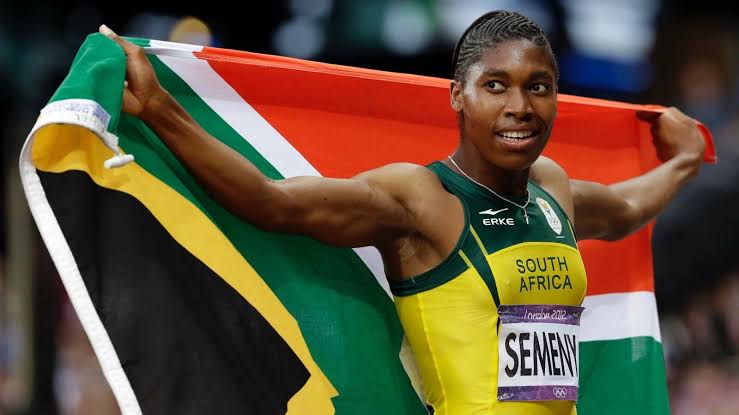As the debate over gender eligibility in athletics continues, it is clear that World Athletics’ new policy is just the latest iteration of a long-standing struggle over inclusion, fairness, and the definition of womanhood.
By Tuka Letura
World Athletics, the global governing body for track and field, oversees international competitions and enforces regulations to ensure fairness in athletics. One of the most debated areas of regulation is gender eligibility. Over the years, the criteria for competing in female categories have evolved from physical examinations to testosterone-based restrictions. In February 2025, World Athletics introduced a new approach: DNA-based sex verification through cheek swabs or dried blood spot tests.
The organisation’s president, Lord Sebastian Coe, stated that the primary goal of these tests is to uphold the integrity of female competition. “We have a responsibility to ensure that the competition remains fair and that female athletes can compete on a level playing field,” Coe said.
Although the timeline for making these assessments mandatory remains unclear, Coe emphasised that the measure has received widespread support. “Our member federations and the broader athletics community understand the importance of these regulations in preserving the essence of our sport,” he added.
He further stressed that the decision aligns with the governing body’s commitment to fair play. “Fairness is at the heart of everything we do, and these measures reflect our dedication to maintaining that principle across all categories of competition,” Coe concluded.

This new testing method focuses on detecting the SRY gene, which is typically found on the Y chromosome and plays a crucial role in male-typical development. By implementing these screenings, World Athletics aims to provide a scientific basis for determining eligibility, while avoiding the invasive procedures used in the past.
XX and XY are special codes in a person’s DNA that help determine whether they are male or female. Typically, females have two X chromosomes (XX), while males have one X and one Y chromosome (XY). These chromosomes carry instructions that influence how the body grows and what characteristics it develops. The Y chromosome contributes to male development, while two X chromosomes generally result in female development. However, in some cases, individuals may have different combinations.
The decision to introduce genetic testing follows ongoing global debates about fairness and inclusion in women’s sports. The 2024 Paris Olympics saw disputes over the participation of female boxers Imane Khelif of Algeria and, less notably, Lin Yu-ting of Taiwan, despite their gold-medal victories. Similarly, the upcoming World Championships in Japan have already prompted discussions about how eligibility rules may affect competing athletes.

But what does this mean in simple terms? What does it translate to for athletes who have dedicated their lives to their sport, only to face yet another hurdle that has little to do with their training, skill, or dedication?
It means that athletes, particularly those from Africa and other non-Western regions, may find themselves subject to scrutiny and possible disqualification based on genetic criteria that do not account for the natural diversity of human biology, as has historically been the case. It also means that a rigid, singular definition of womanhood, constructed largely through Western scientific frameworks, is being imposed on global competition, often at the expense of athletes whose identities and backgrounds do not fit neatly into this mould.
Many female athletes have spoken out about the psychological toll of having their identities questioned and their bodies examined under a global microscope. The fear of being singled out, disqualified, or even publicly shamed creates an environment of stress and anxiety, potentially derailing promising careers.
In his press conference, Coe emphasised that the test would be conducted only once in an athlete’s lifetime, with no repeat testing, unlike other procedures.
While that aspect is reassuring, the uncertainty surrounding the implementation of these rules means that many athletes are left in limbo, unsure of whether they will be allowed to compete in future events. The financial and emotional investments required for elite sports training are immense, and for athletes deemed ineligible under these new guidelines, years of effort and sacrifice may ultimately be in vain.
While World Athletics argues that DNA-based testing is more objective than past verification methods, it is important to recognise that genetics is not a perfect determinant of sex or athletic performance. Biological sex is complex and cannot be reduced to the presence or absence of a single gene like SRY. Variations such as Androgen Insensitivity Syndrome (AIS) and other intersex conditions challenge the binary model that these regulations rely upon.

The controversy surrounding Khelif’s Olympic eligibility underscores the limitations of DNA-based testing as an objective standard for determining sex in sports. Khelif was disqualified from a previous competition due to her genetic profile.
This reflects broader concerns about using chromosomal markers alone to regulate participation, as conditions like Androgen Insensitivity Syndrome (AIS) can result in individuals with XY chromosomes developing female physical characteristics. The debate over her eligibility highlights the tension between maintaining fairness in competition and recognising the diversity of biological sex, reinforcing the argument that genetic testing does not provide a definitive measure of athletic advantage.
In a world where genetic information is highly sensitive, the potential misuse of such data remains a major concern. Who has access to these genetic records? How will they be stored and protected? These are critical questions that governing bodies have yet to fully address.
As the debate over gender eligibility in athletics continues, it is clear that World Athletics’ new policy is just the latest iteration of a long-standing struggle over inclusion, fairness, and the definition of womanhood. While fairness in competition is a legitimate concern, it must not come at the cost of total exclusion for some.

Genetic mutations, for example, occur at similar rates across all populations. However, sub-Saharan Africa has the highest genetic diversity due to its deep evolutionary history, rather than an increased frequency of mutations. This means African athletes, particularly those from sub-Saharan regions, may naturally exhibit a wider range of biological variations, which could be unfairly scrutinised under rigid, one-size-fits-all regulations.
Every athlete’s identity, body, and achievements deserve the same recognition and respect as those of their Western counterparts. Moving forward, gender verification in sports must evolve beyond exclusionary policies and towards a framework that embraces the full spectrum of human diversity, ensuring fairness without reinforcing discrimination.
Tuka Letura is an experienced sports writer with over five years of experience in the craft. He uses data and statistics to provide analysis and commentary. From regional to worldwide competitions, he has covered a wide range of sports-related events and topics. He is devoted to sharing his enthusiasm for sports with his audience and engaging them with interesting anecdotes and viewpoints.




